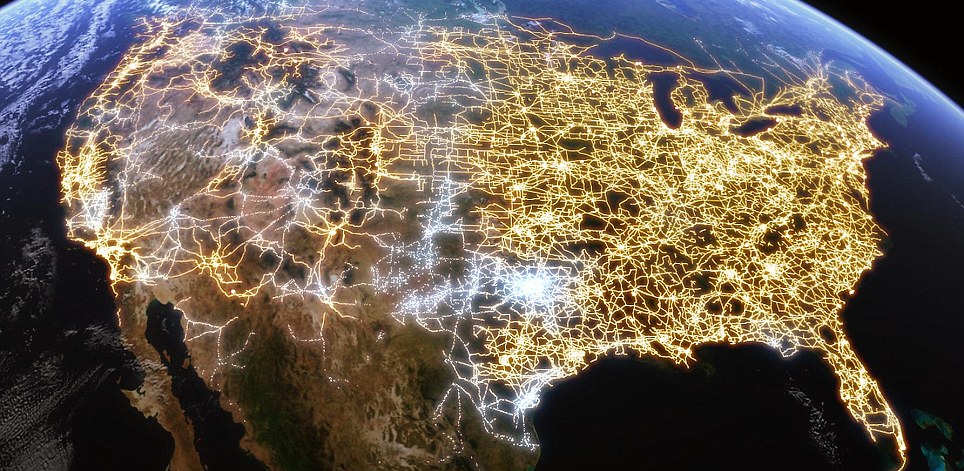Report: Vulnerability of the Electric Grid
 A report by the Center for Security Policy (CSP) paints a dire picture regarding the vulnerability of the U.S. (and by extension—Canadian) electricity grids from man-made or natural electromagnetic disturbances. The CSP and others in the national security sector have been beating this drum for a number of years, but unfortunately all too little is being done about the risks.
A report by the Center for Security Policy (CSP) paints a dire picture regarding the vulnerability of the U.S. (and by extension—Canadian) electricity grids from man-made or natural electromagnetic disturbances. The CSP and others in the national security sector have been beating this drum for a number of years, but unfortunately all too little is being done about the risks.
William Forstchen even wrote a compelling must-read novel on this topic—One Second After—back in 2009. In 2004, the Commission to Assess the Threat to the United States from Electromagnetic Pulse (EMP) Attack also released a report which reached the following conclusions:
Several potential adversaries have or can acquire the capability to attack the United States with a high altitude nuclear weapon generated electromagnetic pulse (EMP). A determined adversary can achieve an EMP attack capability without having a high level of sophistication. EMP is one of a small number of threats that can hold our society at risk of catastrophic consequences. EMP will cover the wide geographic region within line of sight to the nuclear weapon. It has the capability to produce significant damage to critical infrastructures and thus to the very fabric of US society, as well as to the ability of the United States and Western nations to project influence and military power.
The CSP report notes that this “blue-ribbon commission convened by the Congress to examine the EMP threat concluded that, if the power went out and stayed off for more than a year in large parts of the United States—a prospect it found was plausible—as many as nine-out-of-ten Americans would perish.”
In its report, the CSP reviewed and summarized the major findings of “no fewer than eleven studies conducted by or for federal agencies in the past decade [which] have provided an extraordinary consensus: The nation’s bulk power distribution system can be disrupted or destroyed over large areas due to various man-caused and naturally occurring phenomena.”
For a historical perspective, the report describes how the U.S. did not attempt to protect its civilian infrastructure from nuclear weapons during the Cold War, and instead relied on the deterrence value of the mutually assured destruction (MAD) doctrine. However, geopolitical times have changed—but our electrical grids have not:
What is different now is that some potential sources of EMP threats are difficult to deter—they can be terrorist groups that have no state identity, have only one or a few weapons, and are motivated to attack the US without regard for their own safety. Rogue states, such as North Korea and Iran, may also be developing the capability to pose an EMP threat to the United States, and may also be unpredictable and difficult to deter.
One must wonder about the potential sources of the indigenous political motivations that are resisting hardening our electrical grids against these types of attacks. The Secure the Grid Coalition—an ad hoc group of policy, energy, and national security experts, legislators, and industry insiders—has observed that “the Congressional EMP Commission estimated in 2008 it would cost [just] $2 billion to harden the grid’s critical nodes”:
Three bills have been introduced to protect the grid. In 2011, Congressman Trent Franks, backed by a broad bipartisan coalition, introduced HR 668, the SHIELD Act. The SHIELD Act was virtually identical to the earlier GRID Act, except it focused on EMP threats, in an effort to avoid the jurisdictional controversy that dead ended the GRID Act. In October, Rep. Franks introduced a new, bipartisan backed bill, Critical Infrastructure Protection Act (CIPA) to prevent widespread power failures. Like its predecessors, CIPA has found itself trapped in Congress.
When compared to the costs of the grid going down for an extended time, a few billion dollars is a bargain.

Every time I read a new post, I feel like I’ve learned something valuable or gained a new perspective. Thank you for consistently putting out such great content!
Your positivity and enthusiasm are infectious I can’t help but feel uplifted and motivated after reading your posts
I am constantly impressed by the depth and detail in your posts You have a gift for making complex topics easily understandable
I can’t get enough of your insightful articles and engaging stories. Thank you for sharing your passion with the world!
Your content always manages to captivate and educate me. Keep up the fantastic work!
Thank you for providing a positive and constructive space for discussion It’s refreshing to see a blog with a kind and respectful community
Your writing is a breath of fresh air It’s clear that you put a lot of thought and effort into each and every post
Keep up the incredible work! I can’t wait to see what you write next.
Your writing is so eloquent and persuasive You have a talent for getting your message across and inspiring meaningful change
Keep up the amazing work!
Your words have a way of touching hearts and inspiring minds Thank you for using your platform to spread love and positivity
Your passion for what you do shines through in every post It’s truly inspiring to see someone doing what they love and excelling at it